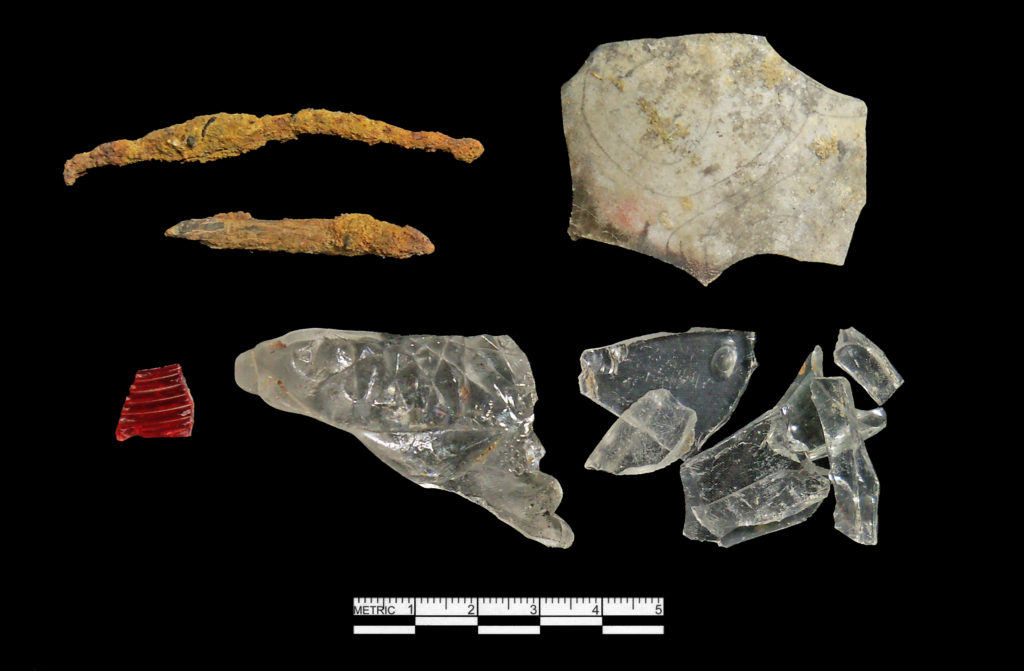Featured Fragment – One Person’s Trash
By Kerry S. González
One of the questions we get asked most often with our work revolves around artifact ownership. In many states, all artifacts recovered from private land during Section 106 review rightfully belong to the person who owned the property at the time they are excavated (ACHP 2009). As such, coordination with landowners is essential. Dovetail works with the landowners to assure that their artifacts are returned to them, but what is retrieved often isn’t what they expect.
The conversation with property owners usually begins like this:
Archaeologist: “Would you like to keep the artifacts found on your property or would you like to donate them to the state repository?”
Landowner: “Yes, I would like to keep them. How many whole bottles did you find? What is the collection worth?”
Archaeologist: “Actually we only found small fragments of clear glass and while the collection has research potential it does not have any monetary value.”
Landowner: “I would like to donate the collection.”
A large percentage of the population believes that during an archaeological excavation only complete objects of monetary worth are recovered. The reality is, we find and collect broken stuff. We dig up people’s trash from the past, most of which is not desirable to anyone but an archaeologist who has spent days/weeks/months digging in the dirt to find it. But as the saying goes, “one person’s trash is another person’s treasure.” As archaeologists we love the broken bits and use these fragments of dishes, bottles, smoking pipes, jewelry, etc. to piece together information on the people that lived in a particular area.
Many of the artifacts we typically find date to the late-nineteenth to early-twentieth century, when large-scale commercial manufacturing allowed for faster production of items like glass, nails, and plastics. Faster and easier production meant that they were more affordable. This, in turn, made those items more readily available to consumers and thus seen as more disposable.
Typically, for this blog we like to highlight a particularly interesting object or collection of artifacts. However, in an effort to show what standard finds are during survey work, please enjoy the pictures below showing the types of artifacts we most commonly see. Are they worth a fortune? No. But are they invaluable to our understanding of our past? Absolutely….

Top row from left: White clay pipe stem, clear lead-glazed redware, two whiteware plate fragments. Bottom row from left, ungalvanized wire nail, machine cut nail, collection of window glass.

From left: Red automobile tail light fragments, clear vessel glass, and collection of clear bottle glass.
Any distributions of blog content, including text or images, should reference this blog in full citation. Data contained herein is the property of Dovetail Cultural Resource Group and its affiliates.
References:
ACHP.gov
2017 ACHP 2009, https://www.achp.gov/docs/ACHP%20ARCHAEOLOGY%20GUIDANCE.pdf, accessed September 2017.
